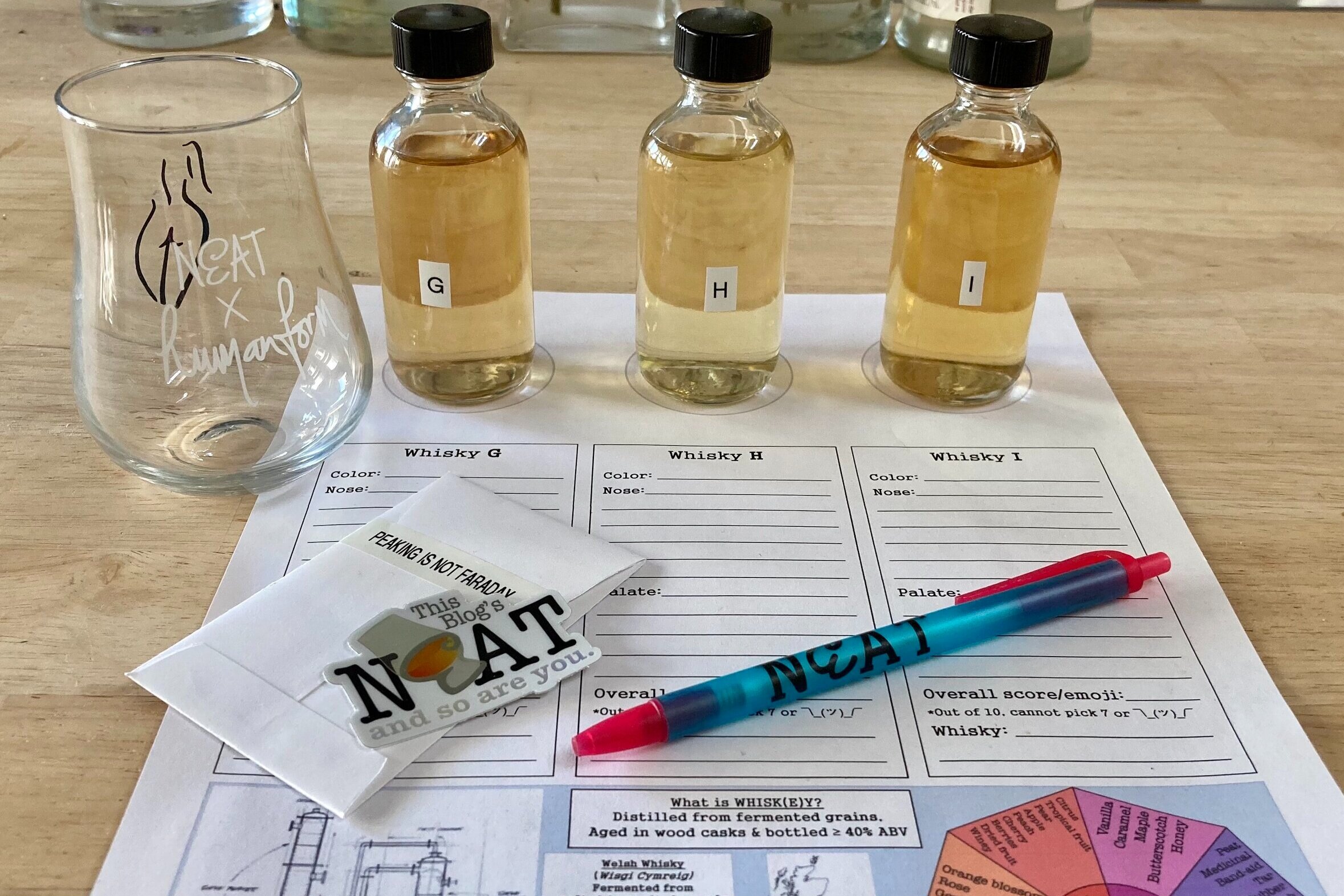Blind Tasting No. 4 Recap
This Saturday we had a tasting dedicated to understanding the mash bill of a whiskey using a few of FEW Spirits’ whiskeys. We discussed the impact that different grains have on the flavor profile of a whiskey. From there, everyone guessed whether each whiskey was a bourbon, rye, malt, or wheat whiskey based solely on their senses. They were also able to narrow down the different mash bills; for example, if they thought there was a wheated bourbon or 100% rye whiskey, based on flavor profile. As always, I was the only one that knew which FEW whiskey was in each bottle.
FEW Spirits is a craft distillery founded by Paul Hletko in 2011 and based just outside Chicago in Evanston, IL. Evanston was a dry town for about 115 years and as a nod to that, Hletko named the distillery after one of the big proponents of the women's temperance movement, Frances Elizabeth Willard. The three FEW whiskeys that were chosen had varying mash bills resulting in varying flavor profiles.
The first whiskey that we tasted had notes of vanilla, caramel, toffee, maple, cereal, spice, peppermint and bananas foster. It was FEW’s bourbon whiskey with a mash bill of 70% corn, 20% rye and 10% malted barley. It is distilled with a hybrid still and aged in new charred Minnesota oak barrels of varying sizes (5-30 gals). The high-rye mash bill brings forth sweet notes of caramel from the corn, spicy pepper and cinnamon from the rye and bitter chocolate from the barley. These flavors are enhanced through maturation.
The next whiskey had notes of mint, apple, scorched rice candy, barn, creamy, apricot, ginger soy sauce, caramel and shoe store. This was FEW’s single malt whisky, which is 100% malted barley with a portion being cherry wood smoked. It’s then distilled with a hybrid still and aged in the used bourbon and rye barrels. The color of this whiskey was noticeably lighter than the bourbon because it was matured in used barrels, which gives it a gentle maturation that enhances the cereal notes of the malt. The flavor profile was dominated by multigrain crispbread and had creamy, honey sweetness with notes of roasted, salted sunflower seeds.
The final whiskey had notes of cherries, red fruit, toffee, almond, vanilla, nutmeg, clove, creamy and cotton candy. It was FEW’s rye whiskey with a mash bill of 70% rye, 20% corn and 10% malted barley. What sets this rye apart from others is that it’s fermented with wine yeast to bring forth fruity notes. It is then distilled and matured in the same way as the bourbon. The rye brings out tons of notes of baking spices and there is some sweetness from the corn and some notes of cereal from the malt. This whiskey was a tricky one as the fruity notes coming from the wine yeast impart a very different flavor profile than a typical rye whiskey. This was the crowd favorite.
The rye and single malt seemed to be the most challenging to identify as their flavor profiles were so unique. American single malts do not taste the same as Scotch single malts that we’re accustomed to tasting for a number of reasons. The FEW single malt stands out from single malt Scotch starting with the cherry wood smoke used to dry a portion of the malt, which brings out different smoked flavors versus the smokiness you get from peated malt. It is then distilled using a hybrid stills instead of pot stills, which impacts the flavors that come through from the fermentation. Finally, it’s aged in used bourbon and rye barrels that are much smaller than traditional 53 gal barrels used for aging Scotch and it’s been aged for a shorter period of time in Evanston, IL where the weather is more variable than Scotland.
The FEW rye, like I said, uses wine yeast for the fermentation, which produces fruitiness that masks some of the spiciness typically found in ryes. Usually some herbaceous notes like dill, rosemary and thyme are prominent in rye whiskeys, however those notes were not present in the FEW rye.
This tasting was fun and challenged everyone’s palate. We can’t wait for the next blind tasting! Not only will we be tasting some great American whiskeys, but all the proceeds will go to Black Girls CODE, an organization dedicated to empowering girls of color ages 7-17 to become innovators in STEM fields, leaders in their communities and builders of their own futures through exposure to computer science and technology.











